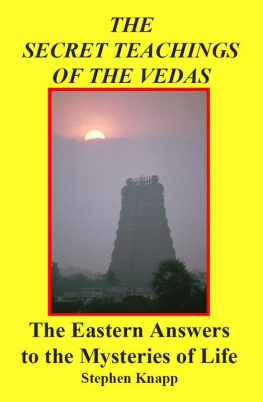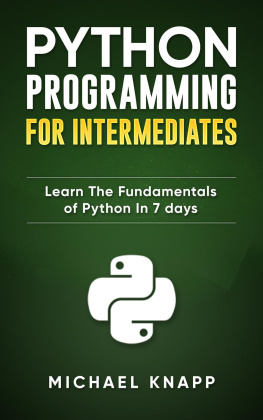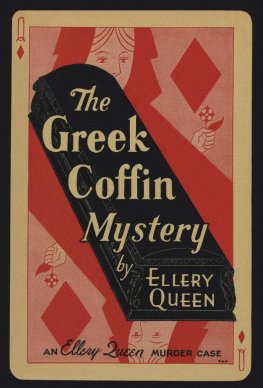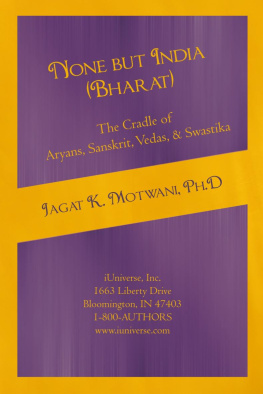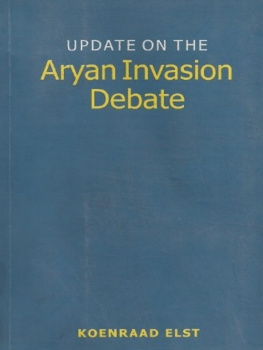Knapp - The Aryan Invasion Theory: The Final Nail in its Coffin
Here you can read online Knapp - The Aryan Invasion Theory: The Final Nail in its Coffin full text of the book (entire story) in english for free. Download pdf and epub, get meaning, cover and reviews about this ebook. year: 2012, publisher: The Vedic Friends Association, genre: Art. Description of the work, (preface) as well as reviews are available. Best literature library LitArk.com created for fans of good reading and offers a wide selection of genres:
Romance novel
Science fiction
Adventure
Detective
Science
History
Home and family
Prose
Art
Politics
Computer
Non-fiction
Religion
Business
Children
Humor
Choose a favorite category and find really read worthwhile books. Enjoy immersion in the world of imagination, feel the emotions of the characters or learn something new for yourself, make an fascinating discovery.

The Aryan Invasion Theory: The Final Nail in its Coffin: summary, description and annotation
We offer to read an annotation, description, summary or preface (depends on what the author of the book "The Aryan Invasion Theory: The Final Nail in its Coffin" wrote himself). If you haven't found the necessary information about the book — write in the comments, we will try to find it.
The Aryan Invasion Theory: The Final Nail in its Coffin — read online for free the complete book (whole text) full work
Below is the text of the book, divided by pages. System saving the place of the last page read, allows you to conveniently read the book "The Aryan Invasion Theory: The Final Nail in its Coffin" online for free, without having to search again every time where you left off. Put a bookmark, and you can go to the page where you finished reading at any time.
Font size:
Interval:
Bookmark:
1. The Secret Teachings of the Vedas: The Eastern Answers to the Mysteries of Life
2. The Universal Path to Enlightenment
3. The Vedic Prophecies: A New Look into the Future
4. How the Universe was Created and Our Purpose In It
5. Toward World Peace: Seeing the Unity Between Us All
6. Facing Death: Welcoming the Afterlife
7. The Key to Real Happiness
8. Proof of Vedic Cultures Global Existence
9. The Heart of Hinduism: The Eastern Path to Freedom, Enlightenment and Illumination
10. The Power of the Dharma: An Introduction to Hinduism and Vedic Culture
11. Vedic Culture: The Difference it can Make in Your Life
12. Reincarnation & Karma: How They Really Affect Us
13. The Eleventh Commandment: The Next Step for Social Spiritual Development
14. Seeing Spiritual India: A Guide to Temples, Holy Sites, Festivals and Traditions
15. Crimes Against India: And the Need to Protect its Ancient Vedic Tradition
16. Destined for Infinity, a spiritual adventure in the Himalayas
17. Yoga and Meditation: Their Real Purpose and How to Get Started
18. Avatars, Gods and Goddesses of Vedic Culture: Understanding the Characteristics, Powersand Positions of the Hindu Divinities
19. The Soul: Understanding Our Real Identity
20. Prayers, Mantras and Gayatris: A Collection for Insights, Protection, Spiritual Growth, andMany Other Blessings
21. Krishna Deities and Their Miracles: How the Images of Lord Krishna Interact with TheirDevotees
22. Defending Vedic Dharma: Tackling the Issues to Make a Difference.
23. Advancements of Ancient Indias Vedic Culture: The Planets Earliest Civilization and Howit Influenced the World.
24. Spreading Vedic Traditions through Temples
The Aryan Invasion Theory (AIT) is the idea that the Vedic people were not indigenousto the area of northern India, but were invaders from the Caucasus Mountain region thatdescended on India around 1500 BCE, and then wrote the Vedic literature and forced the nativesto accept their culture. In writing this chapter I want to emphasize that this book is not about theAryan Invasion Theory (AIT), but we should at least include one chapter on it to show its placein discovering the real history of the development of ancient India and the origins of Vedicculture. In doing so, I acknowledge there have already been volumes written on this controversialtopic, and on where the original homeland of the Indo Aryans might be. So anyone can read anyof those books until one is nauseated with various viewpoints, but that is not what we are goingto do here. Going into a long dissertation about how all the theories were developed and whatevidence they found is the last thing I want to do. For all but the specialist researchers andreaders, it would make for an extremely tedious book, at least more so than some may feel it isalready. So, we are only going to summarize some of the most recent and concluding researchthat is available today.
Let us remember that the idea that the Vedic Aryans came from outside of ancient Indiaand entered the region to start what became the Vedic civilization is a foreign idea. There wasnever any record, either historical, textual or archeological, that supports this premise for anAryan invasion. There also is no record of who would have been the invaders. The fact is that itis a theory that came from mere linguistic speculation which happened during the nineteenthcentury when very little archeological excavation had yet been done around India.
There have been many researchers who have tried to study the linguistics of the people togather an indication of where the original homeland of the Vedic Aryans was actually located.This was done to either try to uphold or refute the idea of the Aryan Invasion Theory. In mybook, Proof of Vedic Cultures Global Existence, I dealt with linguistics and word similarities toa degree, but this topic, in spite of all the research, study, and books written on whatever findingswere made, has done little to absolutely establish with clarity the original home of the VedicAryans.
Some scholars have always felt that the linguistic evidence is not sufficient to drawdefinite conclusions where the homeland of the Vedic Aryans was located.Linguistics amongst some scholars have always been a speculative process, at bestarriving at various conjectures about the origins of particular cultures and languages. Others havebeen even more dismissive of the idea of reconstructing a hypothetical language based on wordsthat remain present in spoken languages thousands of years later. Thus, in trying to understandthe Vedic Aryans and where their homeland may have been by analyzing some hypotheticalProto-Indo-European language that still has not been identified seems rather doubtful. At best, itmay provide some basic hypothesis, which in reality may be most misleading. This also seems tosay that there is little reason to hold the field of linguistics in such a high degree of respect,considering all the books that have been written that seem to use this process to determine somany conclusions, or conjectures, on the homeland of the Vedic Aryans.
As a further comment to this issue, G. P. Singh relates, They (proponents of the AryanInvasion Theory) are divided in their opinion regarding the exact location of the said commonhome, the reason for which is not far to discover. The speakers of Aryan languages have beenclubbed together as an Aryan race which never existed as such. The philological and ethnologicalexplanations regarding the identification of an Aryan language with an Aryan race areconflicting. The similarities of a few words do not necessarily constitute a proof of commonorigin of their speakers, rather they indicate commingling and sociocultural contacts andfellowship. The theory of a common home of members of a so-called Aryan family whether inAsia or Europe cannot be accepted merely on the evidence of linguistic paleontology... TheAryan invasion of India is a myth and not the truth. The Aryans were neither invaders norconquerors. They were not the destroyers of the Harappan civilization but one of its authors. 1
This does not mean, however, that we cannot still use linguistics to help recognize themany similarities of cultures by the closeness of words, in both spelling and meaning, that areused in the languages of various traditions, or where and how far the Vedic and Sanskritinfluence has traveled, and how various cultures may have shared traditions with each other. Butto supply proof of where the Vedic people originated, that is not possible. Plus, today we have somuch more research and archeological evidence that tells far more than the study of linguistics,which will certainly lead us to the correct conclusion about this matter.
Up till today, there is still no culture from the time of ancient India that can be said tohave originated outside and then invaded or brought the Vedic culture to the interior of India.More evidence will be given as we discuss this topic. But for now, what this means is that if welook at the ancient ruins, or agricultural practices, artifacts, or social activities, it can berecognized that they were all based on indigenous techniques and traditions. They are not linkedto anything that would have come from outside of India, although just the opposite is the case.Moreover, we can see a migration from India to the west or even eastward.
Font size:
Interval:
Bookmark:
Similar books «The Aryan Invasion Theory: The Final Nail in its Coffin»
Look at similar books to The Aryan Invasion Theory: The Final Nail in its Coffin. We have selected literature similar in name and meaning in the hope of providing readers with more options to find new, interesting, not yet read works.
Discussion, reviews of the book The Aryan Invasion Theory: The Final Nail in its Coffin and just readers' own opinions. Leave your comments, write what you think about the work, its meaning or the main characters. Specify what exactly you liked and what you didn't like, and why you think so.


